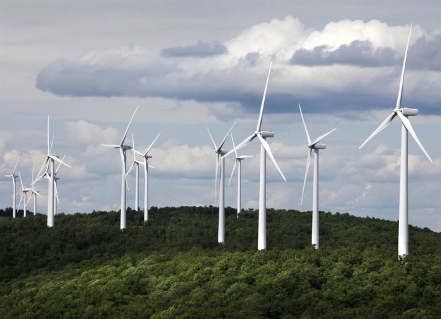There is no reliable or consistent evidence that proximity to wind farms or wind farm noise directly causes health effects. That’s the finding of the National Health and Medical Research Council’s (NHMRC) much-anticipated draft systematic review of the evidence on wind farms and human health, released yesterday.
This report takes the number of reviews published on the issue since 2003 to 20. And all have reached the same broad conclusions.
The NHMRC investigators also found consistent but poor-quality evidence that proximity to wind farms was associated with annoyance and, less consistently, with sleep disturbance and poorer quality of life.
But finding an association between wind farms and these health-related effects does not mean that wind farms cause these problems. These associations could be due to selection or information bias or to confounding factors.
Some poor-quality studies, for example, include only people with complaints, failing to consider the many who are not upset by turbines. And anti-wind farm activists’ efforts to spread fear among communities may cause people who anticipate they will be adversely affected to worry themselves sick.
It is unlikely that substantial wind farm noise would be heard at distances of more than 500 metres to 1500m away, the report concludes, though noise levels vary with terrain, type of turbines and weather conditions.
But when it can be heard, noise from wind turbines, including its content of low-frequency noise and infrasound, is similar to noise from many other natural and human made sources. There is no evidence that health or health-related effects from wind turbine noise would be any different to those from other noise sources at similar levels.

People exposed to infrasound and low frequency noise in a laboratory (at much higher levels than those to which people living near wind farms are exposed) experience few, if any, effects on body functioning.
On the possibility that the “shadow flicker” produced by wind turbines might trigger epilepsy, the investigators found insufficient direct evidence to draw any conclusions.
Flashing lights can trigger seizures among people with a rare form of epilepsy called photosensitive epilepsy. But the risk of shadow flicker from wind turbines triggering a seizure among people with this condition is estimated to be very low.
Finally, on the question of whether turbines might emit harm levels of electromagnetic radiation, the report concludes there is no direct evidence to suggest such a link.
Wind turbines emit extremely low frequency electromagnetic radiation, which are estimated to be less than average levels measured inside and outside Australian suburban homes. There is no consistent evidence that such exposure has a harmful effect on human health.
Wind farm opponents
As occurred with the other 19 reviews, the anti-wind farm lobby will predictably reject these findings. Ms Sarah Laurie, the most prominent of these voices in Australia, said as much in evidence before last year’s Victorian Civil and Administrative Tribunal’s hearing into the proposed Cherry Tree wind farm:
Tim Power (lawyer for Infigen Energy): Can I take it that if the NHMRC reference group confirmed the findings that it made in July 2010 that you would accept that as being robust evidence that wind farms don’t have the health impacts being complained of?
Sarah Laurie: No.
Tim Power: So in a sense what you’re saying is you’re not going to accept the NHMRC findings unless they agree with you?
Sarah Laurie: No. What I’m saying is that we need to do the research first, so that we actually have something to review.
In an interview on ABC radio last year, Laurie hinted that even new, original research would still be unacceptable if it produced yet more evidence showing no harmful effects.
Sarah Dingle (reporter): If federal and state governments agree to fund the research you’re calling for around the country, and it clears wind farms of any adverse impact on human health, would you accept that?
Sarah Laurie: Sarah, the adverse impacts have been shown by a number of studies, both overseas and in Australia.
Next steps
The NHMRC has now called for public submissions on the draft report. Noting there is very little evidence of any acceptable quality available to review, the NHMRC is particularly interested in receiving high-quality evidence published since the date at which they stopped reviewing.
Three recently published peer-reviewed papers will certainly be jetting to the NHMRC. Two are ingenious experimental demonstrating the nocebo effects caused by exposure to frightening information about wind turbines. Nocebo effects are the inverse of placebo effects: when people are warned they may become ill, and then do, even when exposed to a sham “dose” of an allegedly noxious agent.

The third is my study of the way that complaints are concentrated around farms targeted by anti-wind farm activists and absent from places where the lobbyists are inactive, such as Western Australia and Tasmania. A small number of wind farms saw an increase in complaints following attention from activists spreading concern.
Like the cultural curiosity of Korean “fan death, “wind turbine syndrome” is an unrecognised “disease”. It is promoted in mainly English-speaking environments, often confounded by envy from rent-seeking neighbours living on land unsuitable for turbines, by wealthy landowners grimacing at the aesthetic outrage to their bucolic landscapes, and by climate change sceptics and fossil fuel mining investors keen to discredit renewable energy.
At a time when health and medical research into known, serious problems – including the health effects of climate change – faces serious funding challenges, the NHMRC has more important problems at which to direct its limited budget.
Simon Chapman, Professor of Public Health at University of Sydney


